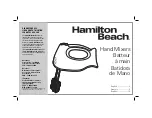
☞
Initializing TM-D1000 internal data
Hold and press the
PARAM SEL
and
ENTER
keys while powering on the TMD-1000, and
press
ENTER
after selecting
All
,
Snapshot
or
Effect
(see page 10).
☞
Setting the word clock
Option
➠
System
➠
Master Clock Select
(see “Word synchroniza-
tion” on page 16).
☞
Selecting record or mixdown mode
Option
➠
MODE
➠
MODE select
(see “Choosing REC or MIX mode” on
page 11).
☞
Selecting Buss Function (group/aux allocations)
Option
➠
MODE
➠
BUSS Function select
(see “Buss configurations”
on page 11).
☞
Assigning channels to busses
Press the channels’s
CH SEL
key, and then the appropriate
CH ASSIGN
key(s) (see “Rout-
ing channels to busses” on page 18).
☞
Bypassing the group buss system
Press the channel’s
CH SEL
key, and then the
DIRECT OUT
key, making sure the channel
is not assigned to a group buss (see “Using the DIRECT OUTs” on page 19).
☞
Monitoring input channels and tape tracks
Assign the input channels and tape tracks to the stereo L-R buss (see “Monitoring, etc.” on
page 21).
☞
Panning channels between output busses
Use the
PAN
controls above each channel fader.
☞
Making EQ settings
Press the
PARAM SEL
key until the
EQ
indicator lights green, and then the channel’s
CH
SEL
key. Make sure the
EQ
key by the
CH ASSIGN
keys is lit, and make the appropriate
settings using the data editing knobs (see “Equalization” on page 18).
☞
Making stereo linked pairs of channels
Press and hold down the
CH SEL
key of an odd-numbered channel, and press the
CH SEL
key of the next even-numbered channel (you can also press and hold any even-numbered
key and press odd-numbered key directly before it)—see “Linking channels for simulta-
neous parameter adjustment” on page 20.
☞
Selecting the way in which internal effect units are used
Option
➠
Effect
➠
Effect Pattern
— choose an effect pattern which
to match your requirements (see “Selecting effect patterns” on page 24).
☞
Selecting and assigning the AUX and EFFECT RETURN
controls
Option
➠
Setup
➠
Aux Rtn Input/Assign
—choose the source and
the routing of the aux and effect returns.
T
ASCAM
TM-D1000
O
PERATIONAL
Q
UICK
R
EFERENCE
G
UIDE
☞
Assigning the channels which use dynamic processors
Option
➠
Effect
➠
Ch Dynamics Insert
—push the
DATA ENTRY
knob to toggle the dynamics on and off, and turn it to move the cursor (see “Assigning
channel dynamics” on page 19).
☞
Setting the dynamic processor parameters
Press the
PARAM SEL
key until the
EFFECT/DYNAMICS
indicator lights green, press the
CH SEL
key of one of the channels using dynamic processors, and use the data editing
knobs to set the processor parameters (see “Assigning channel dynamics” on page 19).
☞
Setting AUX send levels
Press the
PARAM SEL
key until the
AUX
indicator lights green, and use the data editing
knobs to set the levels (see “Setting aux send levels” on page 24).
☞
Selecting the effect to use
Press the
PARAM SEL
key until the
EFFECT/DYNAMICS
key lights green, and use the
DATA ENTRY
knob to select the effect type (see “Selecting the effect to use” on page 24).
☞
Editing the effect parameters
After selecting the effect as described above, use the data editing knobs to set the parame-
ters.
☞
Recalling a snapshot
Press the
ESCAPE/RECALL
key until the display shows
RECALL?
. Choose the snap-
shot and press
ENTER
(see “Recalling snapshots” on page 26).
☞
Storing a snapshot
Press and hold the
SHIFT
key and press the
STORE (ESCAPE/RECALL
) key. Choose a
memory, and press
ENTER
(see “Storing a snapshot” on page 26).
☞
Setting the MMC ID of the TM-D1000
Option
➠
MIDI
➠
MMC Device ID
(see “Setting up the device IDs” on page
29).
☞
Controlling an external device though MMC
Press and hold down the
SHIFT
key while pressing the MMC control keys (MMC blue
labels below the keys)—see “MIDI Machine control” on page 29.
☞
Selecting the MTC type for location operations
Option
➠
MIDI
➠
MTC Type
(see “Selecting the MTC type” on page 30).
☞
Storing and locating to location memories
Use the
MEMO
key (see “Locations” on page 30).
☞
Setting MIDI channels to control the TM-D1000 (Program
Change)
Option
➠
MIDI
➠
MIDI Ch Select
for the Mixer, Effects, Dynamics (see
“Setting Program Change receive channels” on page 32).




















